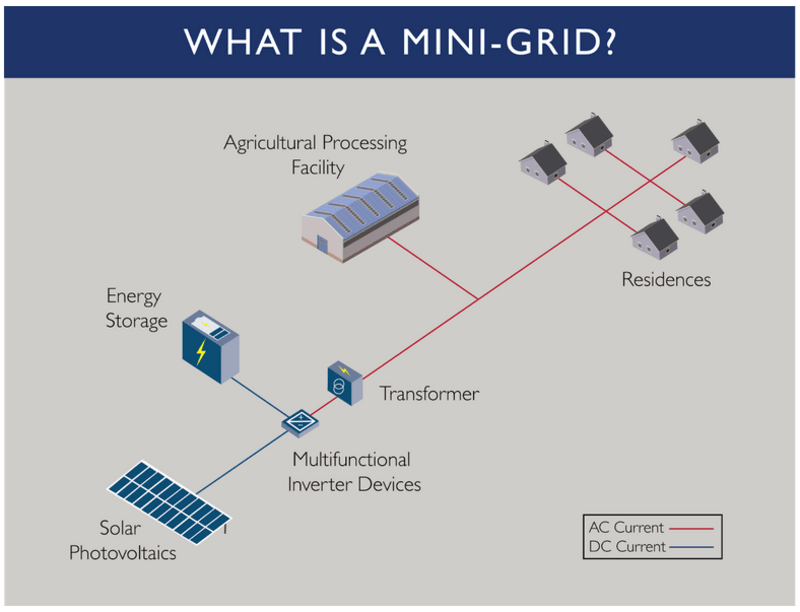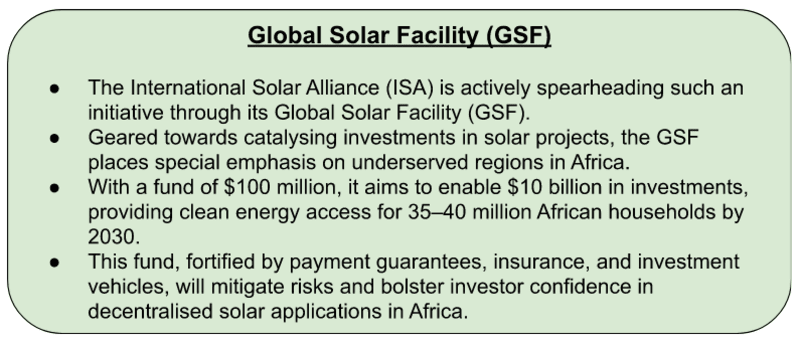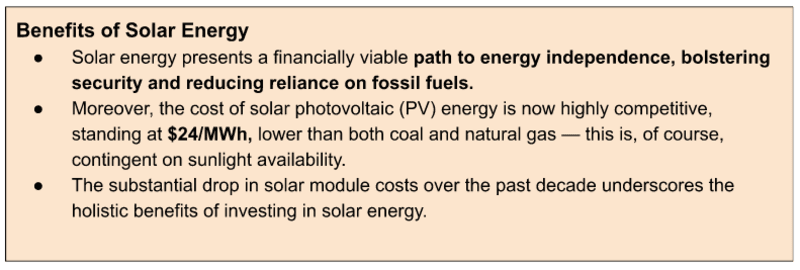The small grid – energy security, with a little help from the Sun
News Excerpt:
Solar energy mini-grids can help end energy poverty of rural communities in climate-vulnerable regions. Investments in these renewable energy initiatives must be scaled up.
What is Mini Grid:
- It is a set of small-scale electricity generators and possibly energy storage systems interconnected to a distribution network that supplies electricity to a small, localised group of customers and operates independently from the national transmission grid.
- When it is harnessed using solar energy, it is known as Solar Energy Mini Grid.
- They range in size from a few kilowatts up to 10 megawatts.

Why it was needed:
- The primary reason is due to energy poverty, as approximately 675 million people worldwide lack access to electricity.
- The majority of these individuals reside in Sub-Saharan Africa.
Potential of Mini Grids:
- Solar mini-grids are identified as a cost-effective and sustainable solution to provide electricity for about 75% of the 675 million people who live without electricity.
- These decentralized energy systems contribute to climate resilience, particularly in farming-dependent rural areas prone to climate shocks like droughts, heat stress, and flooding.
- In instances where central grid infrastructure cannot reach remote communities, mini-grids can act as important complements.
- They've been integrated into national grids in some cases, serving as local distributors and benefiting a significant number of consumers.
Current global solar investments:
- Solar is the cheapest form of energy generation in most countries, and its climate, energy and economic benefits are increasingly apparent.
- However, the current level of global solar investments represents only 10 percent of the required amount to achieve net-zero emissions.
- Notably, developing countries, which are home to over 50 percent of the global population, received a mere 15 percent of renewable energy investments in 2022.
- In Sub-Saharan Africa, per capita investment in renewable energy saw a concerning 44 percent drop between 2015 and 2021.
- To put this into perspective, investments in North America are 41 times higher, and, in Europe, they are 57 times greater.

What needs to be done:
- Energy Mix and Collaboration: The future of energy involves a diverse mix of centralized and distributed renewable generation.
- Successful initiatives in countries like India highlight the collaboration between private and public sectors as a driving force for clean energy adoption.
- Financial Support and Investments: There's a significant disparity in global solar investments, especially in developing countries and underserved regions.
- Initiatives like the International Solar Alliance's Global Solar Facility aim to catalyze investments in solar projects, particularly in Africa, through financial mechanisms and risk mitigation.
- Cost and Viability: Solar energy, especially when combined with battery storage, is financially viable and competitive with traditional fossil fuels.
- The decreasing costs of solar modules over the years highlight the economic benefits of investing in solar energy.
- Urgent Need and Support for Solar Mini-Grids: The article emphasizes the urgent need for support for private mini-grids combined with solar and battery storage, especially in the context of pressing energy access and climate action requirements.

Learning from examples:
- Examples from countries like Cambodia, India, and Nigeria demonstrate the success of private sector-driven solar mini-grids.
- Key lessons include adaptability to local needs and ensuring a sustainable operational model.
- Solar mini-grid companies offer various services beyond electricity, such as mobile telephony, irrigation, agro-processing, e-mobility, and sales/financing of appliances.
- They function as rural development accelerators, contributing to livelihood activities, healthcare, and agriculture.
Conclusion:
The solar Mini Grids hold a significant potential in addressing energy poverty, helping in rural development, boosting climate resilience, and reducing the reliance on fossil fuels. Hence the government must increase its support and investment in these solutions to effectively address the issue of energy poverty.


